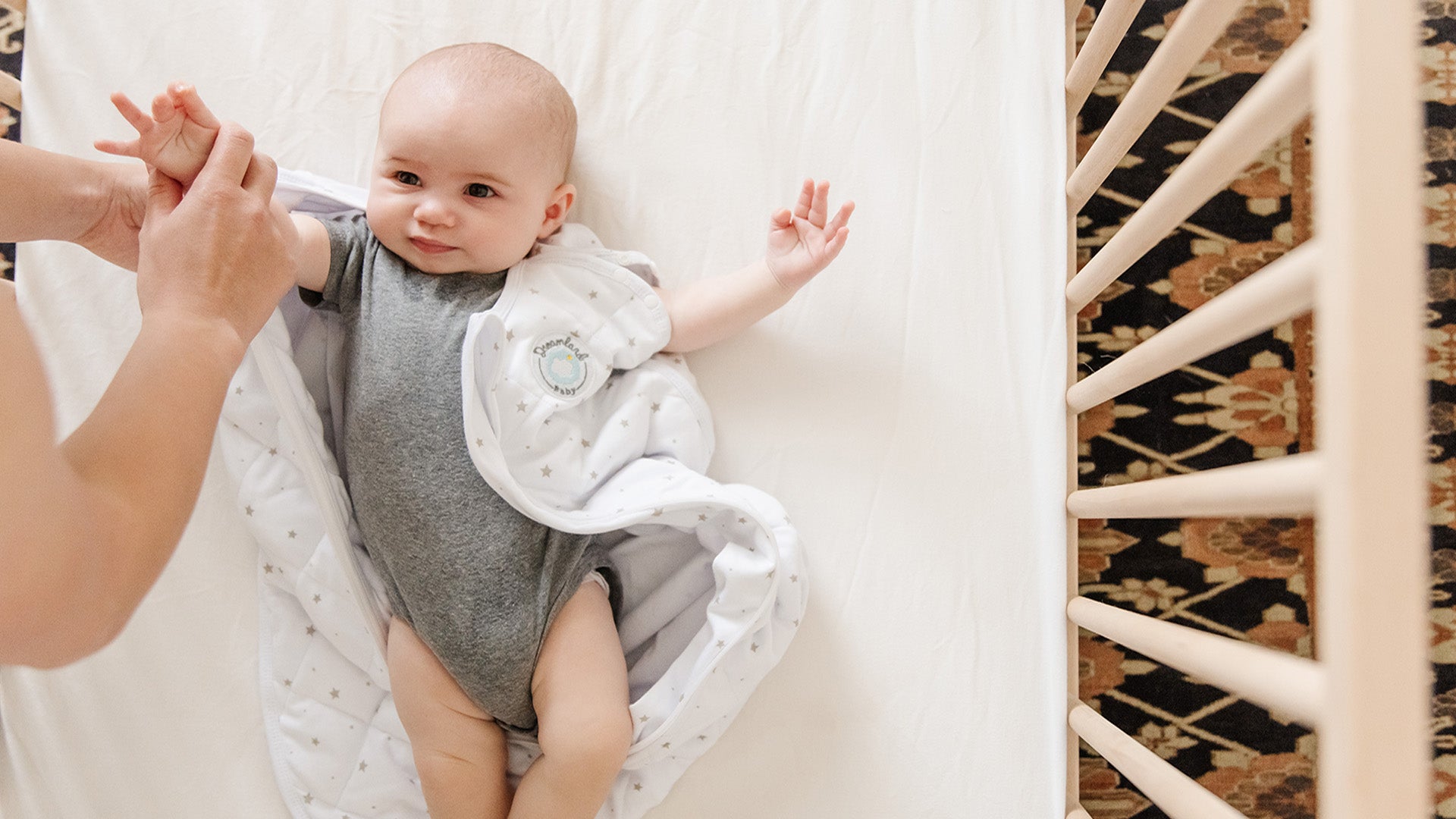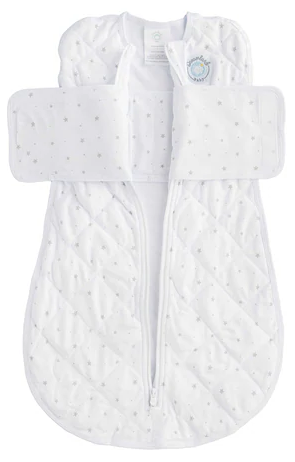Decoding the Grasp Reflex
Babies are born with several reflexes including the startle (or Moro) reflex and the grasp reflex. Reflexes play an important role in your child’s growth and development, hence why you’re doing your research.
The grasp reflex (or palmar reflex) is an involuntary response to external stimuli like pressure in the palm or even sucking while nursing. The grasp reflex is naturally present in infants and newborns until about the age of 5-6 months, at which time it should gradually decrease.
Keep reading to learn everything you need to know about this infant grasp reflex.
What does the grasp reflex do?
The grasp reflex causes your newborn to instinctively wrap their fingers around an object or grasp onto a caregiver just like a baby primate would cling to their mother’s fur. This reflex is most often activated when a person or object touches or strokes their palm. Likewise, it may also be present during nursing and activated by sucking.
Your baby also has a lesser-known grasp reflex in their feet, which causes their toes to flex when you gently stroke the soles of their feet. This is known as the plantar, or Babinski, reflex.
What is a grasp reflex in child development?
The grasp reflex serves as a precursor to the development of your child’s fine motor skills, such as the pincer grasp, which should be present by age 1. The pincer grasp eventually becomes necessary for everything from eating and playing to having legible handwriting.
It’s believed that the palmar grasp reflex, like most other newborn reflexes, helps lay the groundwork for other voluntary movements later on. Your baby’s brain is building the neural pathways necessary for playing with toys, feeding themselves, and many other tasks as they grow.
The precious moments that you share with your baby during nursing, play, and other activities all help their brain build the foundation for the healthy development of their motor skills.
This parent–child interaction also facilities bonding and promotes a healthy relationship.
How do you test your grasp reflex?
To test your baby’s grasp reflex, simply press your finger into your baby’s palm while they are lying flat on their back. An infant with a healthy grasp reflex should automatically close their fingers around yours and hold on tightly - in fact, you may even be able to gently lift them up this way. This test should result in a positive grasp reflex between the ages of 0-6 months.
What is a positive grasp reflex?
A positive grasp reflex means that touch to your baby’s palm (or an object placed in it) results in them closing their hand involuntarily into a fist. A positive grasp reflex should be fairly strong, even in infants who have just been born.
An abnormal palmar grasp reflex would mean that your baby’s palm either do not respond at all to being touched or responds weakly.
The absence of a strong palmar grasp reflex could be an indicator of a health condition or a developmental delay. When in doubt, talk to your child’s pediatrician for help.
At what age does the grasp reflex develop?
The grasp reflex should develop in the womb, and by the time your precious little one is born, their grasp reflex should be strong enough to hold onto a parent’s finger or other objects. In fact, your baby’s grasp may even be strong enough to hold up their weight.
With ultrasound technology, doctors have been able to determine that a baby’s grasp reflex is present from around 16 weeks gestation when babies have been spotted in the womb grasping the umbilical cord. For this reason, the grasp reflex can also be identified in infants who are born prematurely.
At what age does the grasping reflex disappear?
The grasp reflex begins to disappear around the age of 5-6 months, replaced by an intentional grip that is part of the normal development of your child’s fine motor skills. At this point, your baby should begin interacting with toys, food, and other objects around them all on their own without the need for a reflex. This process is known as integration. During this stage, they will also begin to practice reaching for objects, grabbing them, and releasing them on their own.
If your child’s grasp reflex is still present after this time (5-6 months old), it could indicate a health issue such as cerebral palsy or damage to the central nervous system. It’s important to attend regular doctor visits to ensure your baby is progressing on a normal timeline. Some babies may need more support to develop and mature.
At which age does an infant have a strong grasp reflex?
Babies develop their grasp reflex in the womb and only retain it for the next few months after birth. Therefore, the grasp reflex remains strong between 0-6 months, after which it should begin declining and eventually be replaced by a voluntary grasp and other fine motor skills.
Most parents and caregivers have experienced their newborn grabbing tightly onto their clothing, jewelry, or hair and not letting go. This is often simply a presentation of the grasp reflex. To that note, a gentle stroke on the back of the hand should be effective in getting your infant to release their tight grip.
Do all babies have a grasp reflex?
The presence of reflexes helps parents and caregivers identify normal brain and neuron activity. All newborn babies should exhibit several of these reflexes including the grasp reflex. The absence of these reflexes could indicate a problem with your child's health and development.
If you have any questions or concerns about your child's reflexes, be sure to speak with your family doctor or pediatrician.
Conclusion
Your little one will exhibit many fascinating reflexes as they adjust to life outside of the womb. The grasp reflex is just one of these involuntary movements that probably began as a biological adaptation for survival. Enjoy these beautiful bonding moments with your newborn and begin looking forward to the development of your infant’s fine motor skills in the near future.
As your baby matures, they may go through a phase where sleeping is challenging. With so much change going on in their bodies, babies are extremely sensitive. Babies require plenty of good sleep in order to develop and live a healthy life. If your baby is fussy and fighting sleep or waking up early, a weighted sleep sack, swaddle, or blanket can promote better and longer sleep.




Share:
Baby Checkup Schedule
When Can Babies Sleep On Their Stomach?